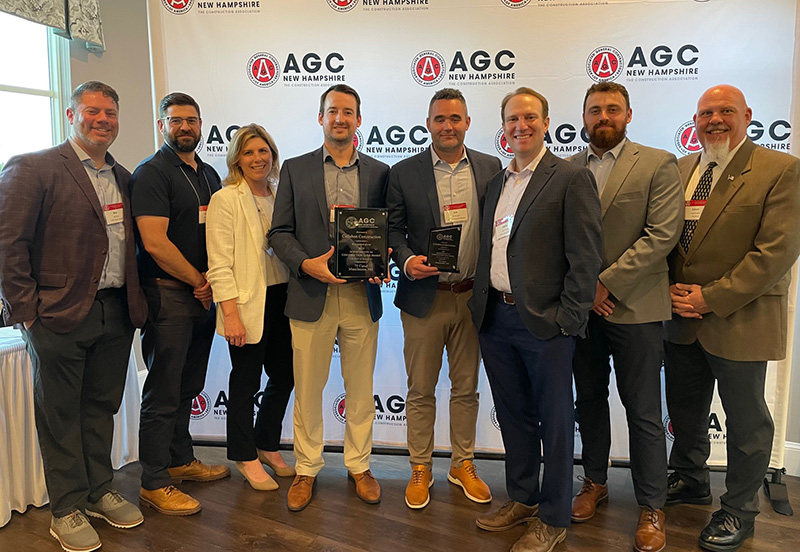News: Construction Design & Engineering
Posted: November 20, 2014
Call for entries: International design competition for sea-level rise in Boston
The city of Boston, The Boston Harbor Association, the Boston Redevelopment Authority, and the Boston Society of Architects have made available Boston Living with Water, an open international call for design solutions envisioning a vibrant, resilient Boston that is prepared for end-of-the-century climate conditions and rising sea levels.
Launched on October 29 by Boston mayor Martin Walsh to coincide with the 2nd anniversary of Hurricane Sandy, the two-stage competition seeks submissions from leading planners, designers, and thinkers that incorporate concepts and strategies, including Living with Water design principles that will increase Boston's sustainability and climate-change resiliency. Selected finalists will further advance location-specific solutions to coastal flood dangers and rising sea levels that are beautiful and replicable.
"The Boston Living with Water competition is a call to action," said mayor Walsh. "We are asking thinkers, planners, and designers to envision Boston in the year 2100. Our challenge is to evolve with our changing climate and rising seas. Our opportunity is to invest in the future and to become a more resilient, more sustainable, and more beautiful city."
Competition details
The competition asks participants to focus on one, two, or three sites, but multiple entries are also allowed.
Sites
This competition considers the challenges of adapting to climate change and rising sea levels at three sites specifically chosen for their vulnerability and where winning solutions could influence redevelopment activities.
Ranging in scale from Building to Neighborhood to Infrastructure, each site presents challenges that are representational of represent common urban conditions and call for scale-specific solutions. Competition solutions should address the unique aspects of the selected site while being replicable elsewhere.
Site 1: Building—Typical of the existing historic urban waterfront fabric of Boston, the Prince Building, located in the North End, embodies the challenges facing multi-owner residential buildings.
Site 2: Neighborhood—The 100 Acres section of Fort Point Channel is representative of the large urban mixed-use redevelopment opportunities across Boston. It includes development sites, green and blue open spaces, multilevel infrastructure, and existing historic buildings.
Site 3: Infrastructure—Morrissey Boulevard, near the outer harbor and mouth of the Neponset River, provides access to Columbia Point peninsula and a range of residential, commercial, institutional, and open-space areas. It exemplifies the critical transportation infrastructure connecting Boston's neighborhoods.
Eligibility
This is an open competition. Proposals from leading architects, urban planners, urban designers, landscape architects, engineers, academics, and climate-change professionals and thinkers are most welcome.
Schedule
Spanning from October 29, 2014, through June 2015, Boston Living with Water is a two-stage planning and design competition:
The first stage is an open international call for proposals seeking site-specific planning and design solutions from m=ulti-expertise competition teams. Due: January 29, 2015.
The second stage is a finalist competition for selected teams to further develop and refine their proposals. Due: May 29, 2015.
Jury members
Mikyoung Kim, principal, mikyoung kim design; Stefan Behnisch AIA, Hon. FAIA, principal, BEHNISCH ARCHITEKTEN; Kristina Ford, Columbia University; and Kairos Shen, director of planning, Boston Redevelopment Authority, City of Boston Matthew J. Kiefer, Director, Climate Change Resiliency Task Force Coordinator, Goulston & Storrs, Beverly A. Scott, Ph.D. , Chief Executive Officer/General Manager, Massachusetts Bay Transportation Authority, among others.
For full details and to register, visitwww.bostonlivingwithwater.org
Social Media: @BostonLwW
The contest has been funded by the Massachusetts Office of Coastal Zone Management and the Barr Foundation, and organized by the City of Boston, The Boston Harbor Association, the Boston Redevelopment Authority, and the Boston Society of Architects.
MORE FROM Construction Design & Engineering
Nobis Group awards Robinson and Moreira STEM scholarships
Concord, NH Nobis Group, a 100% employee-owned consulting firm specializing in engineering and environmental solutions across the Northeast, has named the recipients of its 2025 STEM Scholarship: Andie Moreira of
Columns and Thought Leadership

Careers in Construction Month focus on training and safety - by Joe Camilo
October is Careers in Construction Month, and rarely has it been more consequential. According to our chapter’s national parent organization, the construction industry needs to attract half-a-million new workers in the coming year to meet demand. Addressing that need is a huge job, but we at ABC MA are trying to do our part.

Ask the Electrician: Is summer a prime time for commercial electrical maintenance?
The answer is “Yes!” While January marks the official new year, many businesses view September as a fresh start. This makes summer an ideal time for commercial property owners to schedule long-term electrical maintenance projects.

The rise of incubators and co-working spaces: The latest in life sciences - by Matt Combs
In recent years, the life science industry has witnessed a shift in how companies operate and innovate. One of the key driving forces behind this transformation is the emergence of incubators and co-working spaces specifically tailored to meet the unique budget and schedule needs of startups.

The design-build advantage: Integrated interior design solutions - by Parker Snyder
When it comes to corporate interior spaces for both commercial and industrial projects, partnering with a design-build firm with in-house interior design services can offer clients many benefits. Unlike traditional delivery methods where interior designers operate independently from the design and construction teams, often creating a longer project timeline as cost negotiations and revisions ensue







.png)
